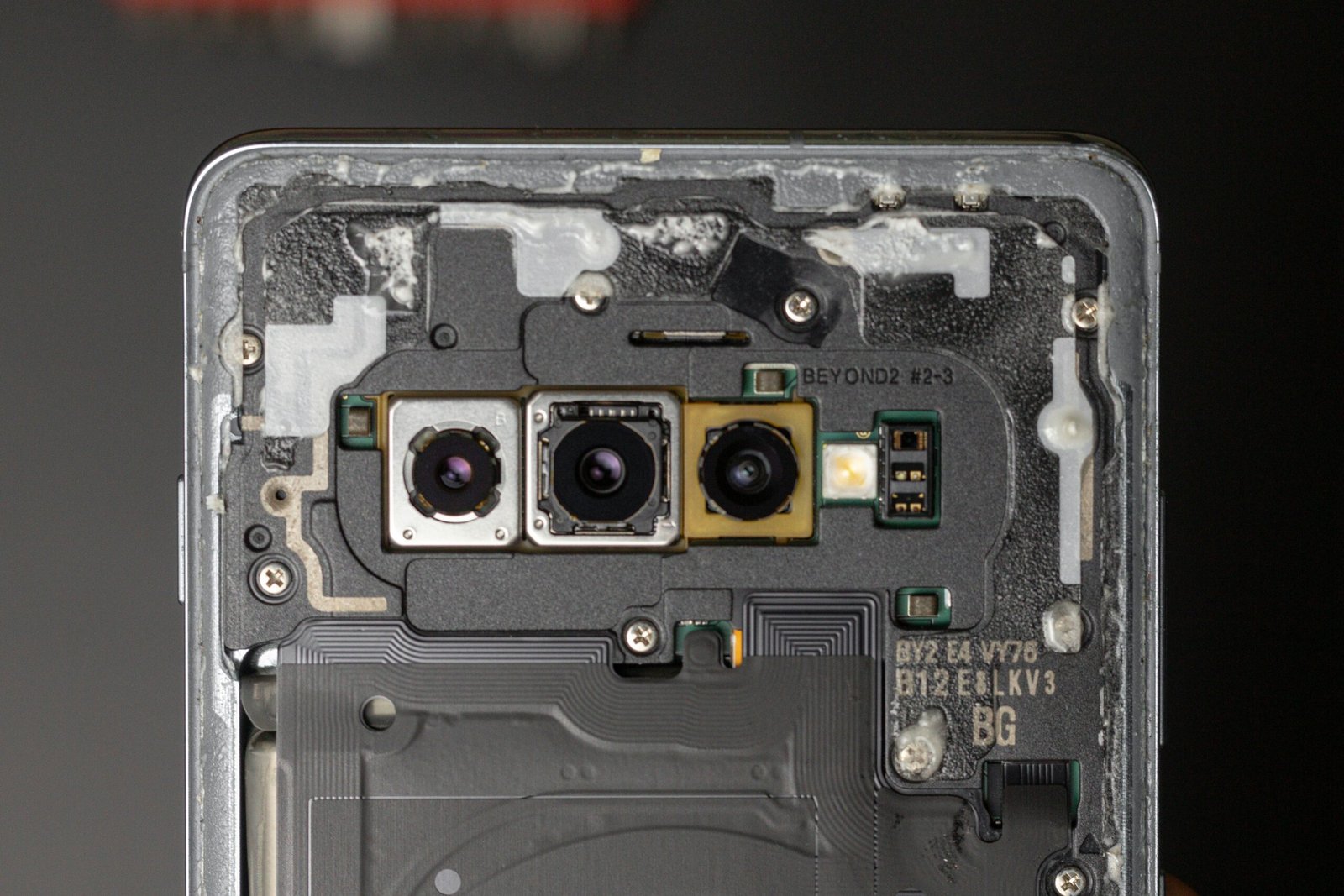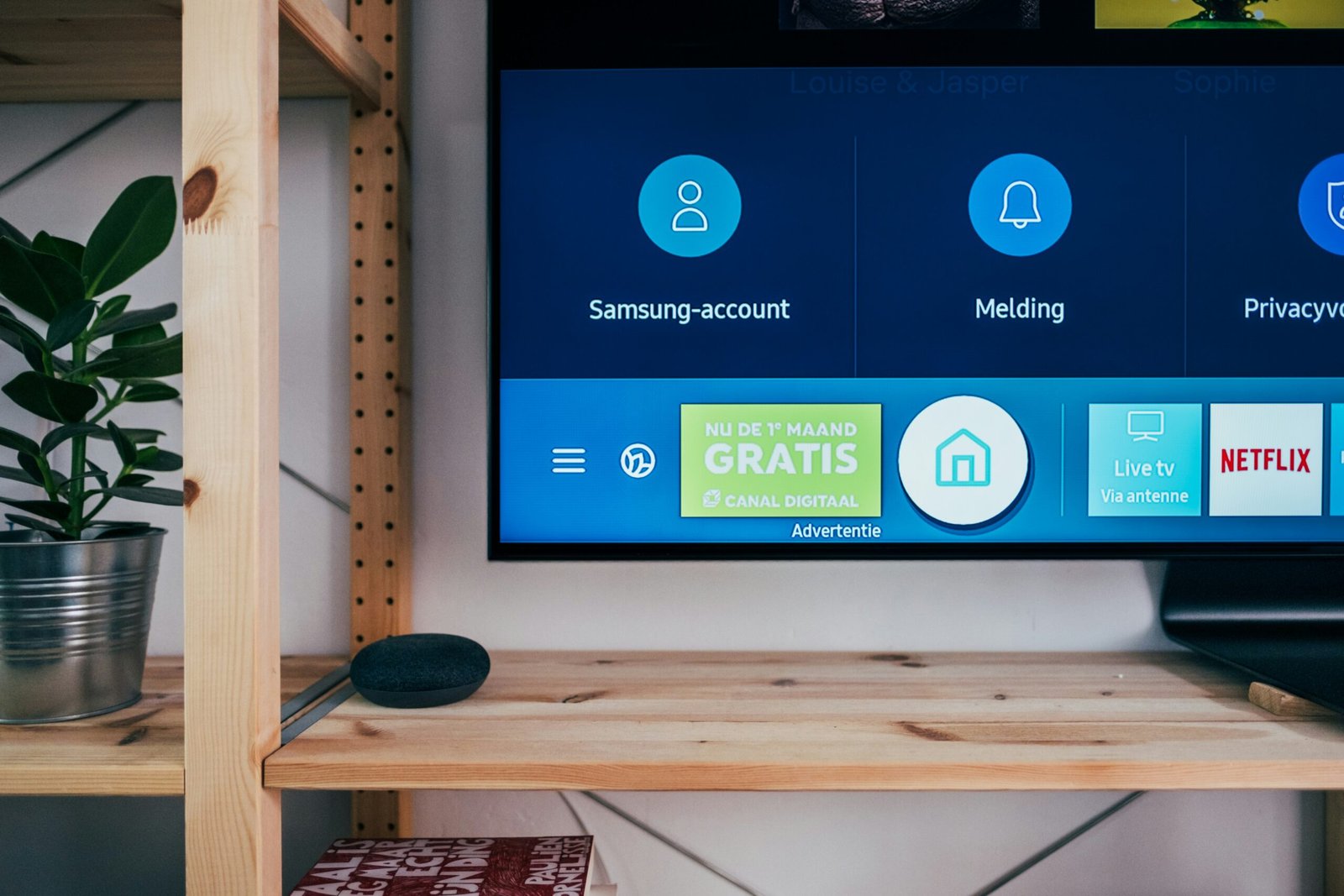What is the Hardest Phone to Repair: A Comprehensive Analysis
Introduction to Smartphone Repair Challenges
The advent of modern smartphones has revolutionized our daily lives, offering unprecedented connectivity and functionality. However, this technological evolution has brought about a unique set of challenges, particularly in the realm of repairs. The transition from older, bulkier designs to sleek, compact builds has significantly increased the complexity of smartphone repairs. The integration of advanced features such as OLED displays, multi-camera systems, and biometric sensors has further compounded these difficulties.
From a technical perspective, the move towards miniaturization and aesthetic refinement means that components are often intricately packed within slim casings. This not only makes them harder to access but also raises the risk of accidental damage during the repair process. The utilization of proprietary screws and adhesives by manufacturers further complicates matters, requiring specialized tools and knowledge that are not always readily available to independent repair technicians and consumers alike.
Understanding these repair challenges is crucial for several reasons. Firstly, consumer expectations regarding the longevity and durability of their devices are higher than ever. Complicated repair processes can lead to higher service costs, which, in turn, impact consumer satisfaction and loyalty. Secondly, from an economic perspective, the difficulty of repair contributes to increased e-waste as consumers often opt for device replacement rather than repair, perceiving it to be more cost-effective or time-efficient. This reality underscores the importance of promoting sustainability within the industry by advocating for more repairable designs.
As we delve deeper into the specifics of smartphone repair challenges in the following sections, it is essential to appreciate the delicate balance between technological sophistication, consumer convenience, and environmental responsibility. The insights gained will shed light on the broader implications for manufacturers, consumers, and repair professionals in navigating the complex landscape of modern smartphone repairs.
Criteria for Assessing Repair Difficulty
The difficulty in repairing a smartphone can be attributed to several key factors that collectively determine whether a phone is user-friendly or a challenge for even experienced technicians. One prominent factor is the complexity of internal components. Modern smartphones often cram vast amounts of technology into slim and sleek bodies, which can complicate the disassembly and reassembly process. High-density circuitry and intricate layouts increase the risk of damage during repair.
Another significant criterion involves the use of proprietary screws and parts. Many manufacturers utilize specialized screws and unique components, making standard repair tools ineffective. This necessitates the purchase of specific screwdrivers and replacement parts directly from the manufacturer, thereby driving up the repair cost and difficulty. Moreover, proprietary parts are frequently scarce, affecting the availability and timing of the repair process.
The availability of repair guides and parts also plays a crucial role. Comprehensive and accessible repair guides can significantly diminish the difficulty of fixing a phone, enabling users to follow step-by-step instructions. On the contrary, phones lacking detailed repair documentation often require more expertise and experience to fix. Similarly, the availability of spare parts impacts repairability; readily available parts facilitate repairs, whereas scarcity of parts can make a phone nearly impossible to mend.
Furthermore, the modularity of the design is a vital factor. Phones designed with modular components are generally easier to repair because individual parts can be swapped out without the need to disassemble the entire device. However, non-modular designs mean that fixing a single component might require a complete teardown, escalating the difficulty and risk.
Conclusively, these criteria—complexity of internal components, proprietary screws and parts, availability of repair guides and parts, and design modularity—interact to influence a smartphone’s repair difficulty. Evaluating these factors holistically provides a comprehensive understanding of how challenging it is to repair a particular phone model.
Case Study: The Apple’s iPhone Series
Apple’s iPhone series is often cited as a prime example of devices posing considerable challenges for repairs. Among the models, the iPhone X and its subsequent versions stand out for their intricate build and unique design elements, which significantly amplify the difficulty of repairs.
One of the primary factors contributing to the complexity of repairing these devices is the widespread use of adhesive-backed components. For instance, the iPhone X’s internal architecture heavily relies on adhesive to secure the battery, display, and other internal components. This design choice makes the processes of disassembly and reassembly labor-intensive, requiring specific tools and a high level of precision.
Another notable challenge is the complex cable routing seen in these models. The internal layout ensures that numerous small and fragile cables are densely packed within a confined space. Dismantling such an arrangement without causing damage necessitates extreme caution and expertise. Even minor mistakes in handling these cables can lead to significant functionality issues, further complicating the repair process.
Moreover, the use of proprietary parts poses a substantial obstacle in the repair of iPhones. Numerous key components, such as the OLED screen and Face ID sensors in the iPhone X, include parts unique to Apple. Securing authentic replacements can be both costly and time-consuming, and utilizing non-original components can result in suboptimal performance or incompatibility. Apple’s tight grip on the availability of these proprietary parts undoubtedly adds an extra layer of difficulty, often steering consumers towards official repair channels rather than third-party technicians.
In summary, the intricate design choices seen in Apple’s later iPhone models contribute significantly to their status as some of the hardest phones to repair. Factors like adhesive-backed components, complex cable routing, and the use of proprietary parts collectively heighten the challenges faced by both professional and amateur repair technicians.
Case Study: The Samsung Galaxy Series
The Samsung Galaxy series, particularly the Galaxy S and Note models, provides a compelling case study on repair difficulties. These smartphones, known for their sleek design and advanced features, present several challenges for repair professionals. One of the primary obstacles is the curved screen design, which, while aesthetically pleasing, makes screen replacements more complex and precarious. Unlike flat-screen models, curved screens require meticulous alignment and handling to avoid damage during the repair process, significantly increasing both the time and cost of repairs.
Furthermore, the internal components of the Samsung Galaxy series are densely packed to maximize performance while maintaining a slim profile. This engineering marvel, while advantageous for user experience, complicates repairs. Accessing internal parts often involves removing multiple layers of components, each connected by delicate flex cables. The potential for accidental damage during disassembly or reassembly is high, deterring novice repair attempts and necessitating specialized tools and techniques.
Another notable concern is the increased fragility of the back glass panels, especially in recent models. These glass backs, while contributing to the device’s premium feel, are susceptible to shattering even from minor impacts. Replacing a cracked back panel is labor-intensive, often requiring the phone to be disassembled completely to ensure a proper fit and secure adhesion of the new glass.
When compared to other brands, Samsung’s repairability scores tend to reflect these complications. They generally rank lower than brands like Google Pixel or Fairphone, which design their devices with repairability in mind. However, Samsung has made strides to improve this aspect, such as increased availability of genuine parts and repair guides. Nonetheless, the intrinsic design choices in the Galaxy S and Note series remain a significant barrier to ease of repair, underscoring the challenges faced by technicians and the importance of professional expertise in maintaining these advanced yet repair-challenging devices.
“`html
The Role of Software and Firmware
Software and firmware play a pivotal role in determining the repairability of modern smartphones. Notably, these digital components can create significant obstacles for repair enthusiasts and professionals alike. Encrypted storage is one such challenge. By securing data through complex encryption protocols, manufacturers ensure that only authorized personnel can access and alter key system components, thereby making it arduous for third-party repair shops to conduct repairs without compromising data integrity.
Additionally, software locks often inhibit unauthorized repairs. These locks, integrated within the phone’s firmware, can disable certain functionalities until the proper service codes are entered. An illustrative case is Apple’s ‘Error 53’ issue. This particular error occurred when the device detected an unapproved repair to the Touch ID sensor, subsequently rendering the phone inoperable. This practice by manufacturers effectively deters unauthorized repairs, as bypassing such software locks frequently requires proprietary tools and knowledge restricted to licensed service providers.
Beyond individual repair scenarios, manufacturers increasingly use software to control the entire repair ecosystem. Through routine firmware updates, they can introduce new restrictions or modify existing ones, influencing how and when repairs can be conducted. This software control extends to aftermarket parts, often designed to be incompatible unless paired with specific authentication codes. The implications for repair shops are profound, necessitating costly investments in acquiring or licensing specialized diagnostics tools to perform even routine repairs.
For DIY enthusiasts, the barriers are even higher, often resulting in failed home repairs or damage to the device. As a result, this strategic use of software and firmware has pushed many toward professional repair services, indirectly reinforcing the manufacturer’s control over the market while potentially increasing the overall cost of ownership for consumers.
“`
The Influence of Design Trends
Modern smartphone design trends have significantly influenced the complexity of repairs. One of the most notable trends is the drive for slimmer profiles. As manufacturers strive to create increasingly sleek devices, internal components are packed more tightly, often necessitating the use of specialized tools and techniques for disassembly and repair. This minimalist approach, while aesthetically pleasing, often complicates the process of reaching and replacing faulty parts. For instance, the ultra-thin design of the iPhone X series requires considerable skill to navigate its intricate internal layout without causing damage.
Another trend contributing to repair challenges is the implementation of edge-to-edge screens. These expansive displays are secured with strong adhesives and delicate connectors, making it difficult to replace them without risking further damage. The Samsung Galaxy S20 series exemplifies this issue, with its edge-to-edge display and curved edges adding an extra layer of complexity to screen repairs. The removal and reinstallation of such screens demand precision and care, often necessitating professional repair services.
Waterproofing has become a standard expectation for high-end devices, adding yet another layer of complexity to repairs. To achieve water resistance, manufacturers use strong adhesives and seals, which, while effective for keeping liquids out, pose significant obstacles during disassembly. For instance, the Google Pixel 4, renowned for its waterproofing, requires meticulous handling to maintain its integrity during repairs. The strong adhesives must be carefully softened and peeled without compromising the device’s waterproof seals, requiring both experience and the correct tools.
These design trends, while enhancing the user experience in terms of aesthetics and durability, inherently make repairs more challenging. The trade-offs between design and repairability are evident, necessitating a careful balance to meet consumer expectations while maintaining practical reparability. Specific models like the iPhone X, Samsung Galaxy S20, and Google Pixel 4 highlight how modern design choices can significantly complicate the repair process, often requiring professional intervention to ensure effective and safe repairs.
Consumer Impact and Advocacy for Repairability
The complexity of phone repairs carries significant implications for consumers, both financially and practically. As technology advances, devices become increasingly intricate, often requiring specialized tools and expertise for repair. This, in turn, leads to higher costs associated with fixing broken or malfunctioning phones. For many users, the expense of professional repair services can be a financial burden, sometimes exceeding the value of the device itself.
Moreover, the difficulty in repairing modern phones affects their longevity. When faced with a costly or unfeasible repair, consumers may opt to replace their device altogether, leading to a shorter device lifecycle. This trend not only impacts personal finances but also contributes to environmental issues, with electronic waste becoming a growing concern globally. The reduced lifespan of electronic devices underscores the importance of promoting repairability in modern phones.
In response to these challenges, there has been a significant rise in advocacy for repairability, spearheaded by movements like the Right to Repair. This movement campaigns for legislation that mandates manufacturers to provide consumers and third-party repair services with the necessary tools, parts, and information to fix their devices. The Right to Repair movement has garnered substantial support, influencing both policymakers and manufacturers to consider more repair-friendly designs in their products.
Legislation inspired by the Right to Repair movement has already seen successful implementation in some regions, advocating for transparency and accessibility in repair processes. These changes aim to empower consumers, allowing them the choice to repair their devices rather than replace them. In turn, this can lead to more sustainable consumption patterns and potentially lower long-term costs for users.
The advocacy for better repairability continues to grow, challenging manufacturers to rethink their design and production strategies. By prioritizing consumer needs and promoting sustainable practices, the repairability movement aims to create a market that values both durability and accessibility, ultimately benefiting consumers and the environment alike.
Conclusion and Future Outlook
In wrapping up this comprehensive analysis, it is evident that the intersection of innovation and repairability presents a challenging balance for smartphone manufacturers. As we’ve explored, some of the industry’s latest models showcase cutting-edge features at the expense of ease of repair. The complexity of these designs often translates into higher repair costs and difficulty for consumers attempting self-repair.
While innovation drives the advancement of technology, it also necessitates a closer look at the implications for sustainability and consumer rights. The tightening designs of many modern smartphones indicate a concerning trend where repairability takes a back seat. However, this does not have to be the definitive path forward. There lies significant potential in the adoption of modular designs that simplify repairs and extend the life cycle of devices.
Manufacturers can also play a pivotal role by offering more robust support for self-repair initiatives, potentially through providing spare parts, repair manuals, and adopting standardized components. By doing so, not only does it empower the end-user but it also reinforces a strong commitment to environmental stewardship.
Future trends in smartphone design may see a greater emphasis on harmony between cutting-edge functionalities and sustainable practices. Enhancing modularity, designing with repairability in mind, and fostering manufacturer-consumer collaboration could be the cornerstone principles driving this evolution.
Ultimately, a cultural shift is necessary, where both manufacturers and consumers prioritize sustainable, repair-friendly designs. Each purchase decision and design choice can contribute to a larger, positive impact on the environment. We encourage consumers to advocate for and support products that align with these values and for manufacturers to embrace their responsibility in creating a more repairable and sustainable technological future.







